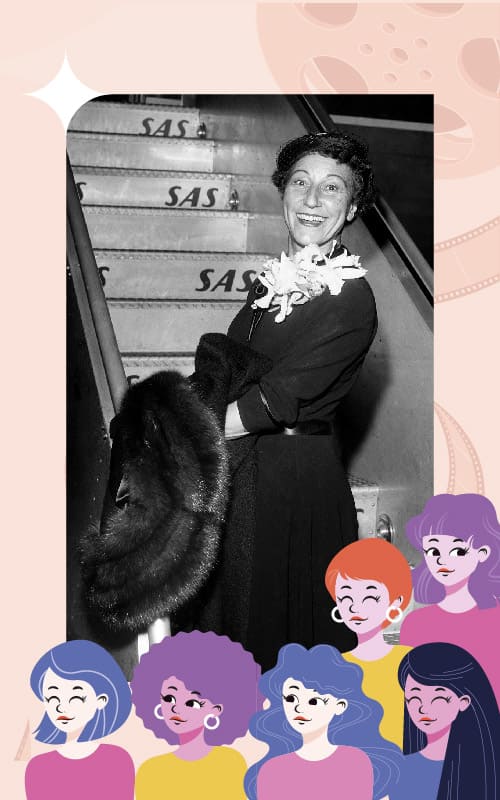 55 56229595
55 56229595
 simposium2023@filmoteca.unam.mx
simposium2023@filmoteca.unam.mx
 55 56229595
55 56229595
 simposium2023@filmoteca.unam.mx
simposium2023@filmoteca.unam.mx
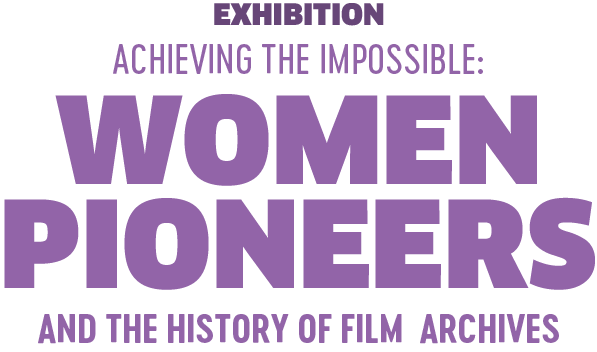
Claudia Triana de Vargas has a degree in Liberal Arts (Art Teacher) from the Philosophy and Letters Faculty of the University of Navarra in Pamplona, Spain. She currently works as director of the Mixed Film Promotion Fund, “Proimágenes en Movimiento”, a position she has held since 1988 and where she has played a decisive role in promoting film activity in Colombia, promoting Laws 814 of 2003 and 1556 of 2012. She was the director of the Bogotá Cinematheque between 1980 and 1986, a period in which the film archive reached the status of a fundamental organic project, the specialized library service was made available to the public, and the editorial project “Cuadernos de Cine Colombiano” was launched. Also, in 1984 the inscription of the Cinematheque before the FIAF was achieved, as an associate. She was a promoter of the creation of the Colombian Film Heritage Foundation, of which she was Executive Director between 1986 and 1995, where she promoted the memory of moving images of a national nature, recovery and whose archival and heritage awareness marked the beginning of a new era for national cinema. During her period as executive director of the Foundation, in 1988 she achieved registration with FIAF as a member. In addition to all this management and promotion work for Colombian cinema, she participated in different audiovisual productions as executive producer of En busca de María (1985) by Jorge Nieto and Luis Ospina; Slapstick, the American silent comedy (1986) by Luis Ospina; Beyond the tragedy of silence (1987) by Jorge Nieto and Our movie (1993) by Luis Ospina and Lorenzo Jaramillo.

Marta Elena Restrepo González was Director of the audiovisual archive at Caracol Televisión until 2020. She is one of the founders of the publication “Cuadernos de Cine Colombiano” of the Bogotá Cinematheque, in its early days. In 1982, Marta Elena specialized in Audiovisual Archive Management and Audiovisual Documentalist, at the National Audiovisual Institute (INA) in Paris, France, being the first professional in Colombia with an emphasis on audiovisual archives. She has been a professor of Cinematographic Analysis and Language, and a researcher on the history of Colombian cinema at the Colombian Cinemateca Foundation, the Bogotá Cinemateca, and the Colombian Film Heritage Foundation.
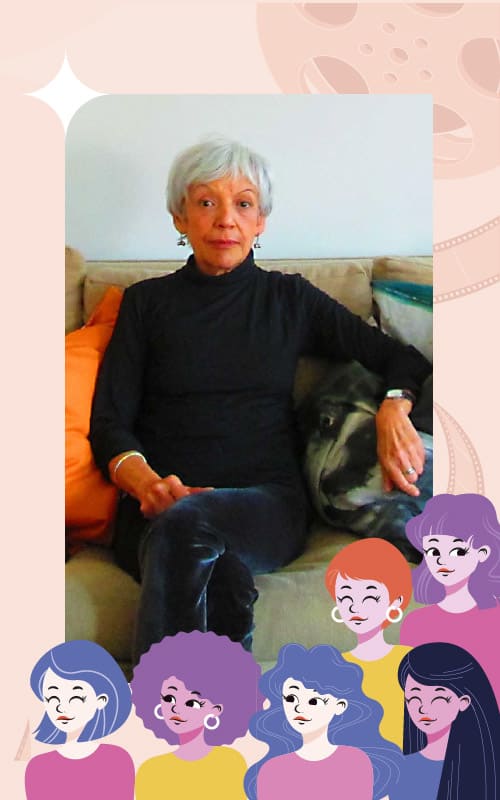
Marina Arango Valencia y Buenaventura is a Master in Cinematographic Fine Arts with a specialization in Film Direction and Storyline Television from the Film Institute of the Soviet Union (VGIK). She is a director, producer, screenwriter, editor, and actress, she has designed and implemented policies, programs, and development projects for the audiovisual sector. She is a co-creator, along with the Colombian Film Heritage Foundation, of the Colombian Audiovisual Heritage Information System (SIPAC). Since 1998 she has been an Advisor to the Directorate of Audiovisuals, Cinema and Interactive Media (formerly Directorate of Cinematography) of the Ministry of Culture, where she works as Coordinator of the Colombian Audiovisual Heritage, of the Memory and Circulation Group.
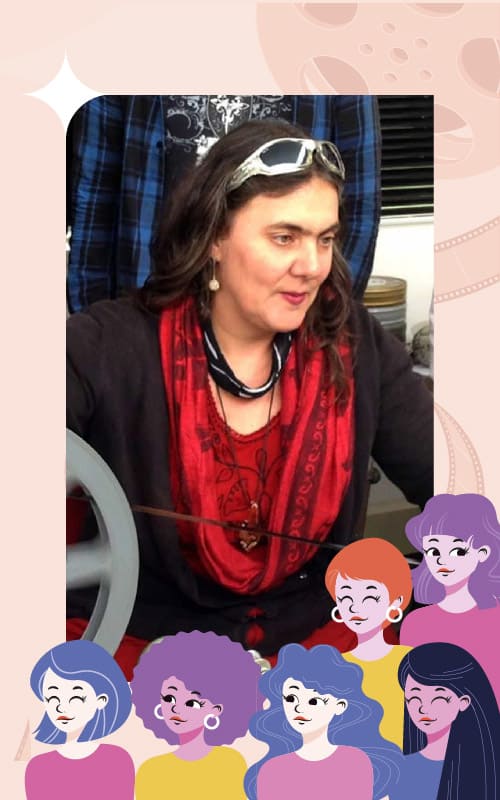
Dora Alicia Brausin Pulido is a social communicator and journalist for the Los Libertadores University Foundation. She is a specialist in Management and Cultural Management from the Universidad del Rosario and a Master in History from the Pontificia Universidad Javeriana. Since December 2016, she has held the position of Radio Assistant Manager at RTVC Sistema de Medios Públicos, a station with which she leads artificial intelligence projects and new narratives. She began her working career as a journalist, programmer, and producer at the National Radio Station of Colombia-Inravisión. She subsequently served as Coordinator of the Education for Communication project in different locations in Bogotá. When she wrote her thesis between 2004 and 2007, she chose Radio Nacional in the Rojas Pinilla regime as the main topic, and doing her research she found great jewels in the RTVC music library. This discovery led her to undertake the adventure of leading and establishing a model for the recovery, restoration, digitalization, and cataloging of this sound archive. Between 2007 and 2014 she was the Sound Library Coordinator at RTVC -Radio Televisión Nacional de Colombia- where she has been recognized as a pioneer woman in the preservation of Colombian sound heritage. During 2016 she was a consultant for the recovery project of photographic and audiovisual archives for the Radio and Television Institute of Peru.
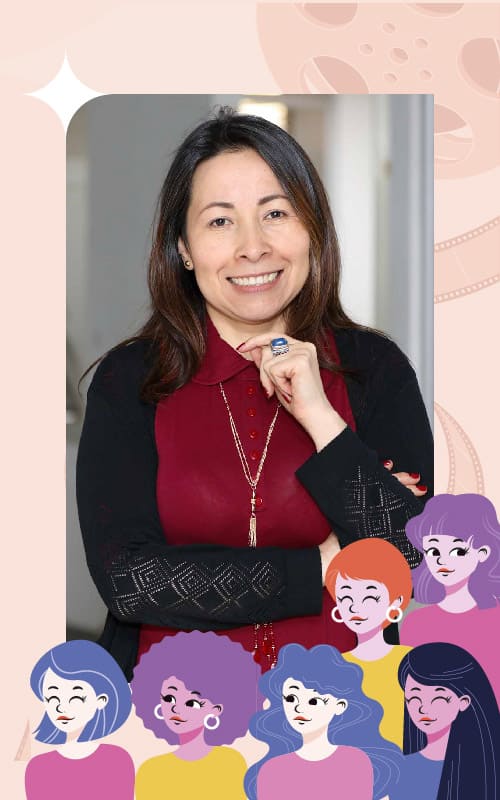
Erika Gregor (born 1934), while doing research for film historian Ulrich Gregor in the 1950s and 1960s, was faced with the situation of having to travel to Copenhagen, Brussels, London and Paris to view international films. Consequently and as a reaction to the foundation of the Deutsche Kinemathek in Berlin in 1963, she co-founded the association Freunde der Deutschen Kinemathek (today: Arsenal – Institute for Film and Video Art) with the aim of filling this gap, of presenting film historical films as well as contemporary cinema in order to promote cultural and political education in Germany. Soon filmmaker friends were donating prints to build up an archive. In 1971, she co-founded the Forum of the Berlinale. Each year, they invested part of the subsidies in German subtitled prints that could then circulate. Today, many of these prints are unique. During her research trips, she specifically looked for films by women which were hardly ever shown. For instance, she included all the films that were shown at the 1st International Women’s Film Seminar in 1973 into the Arsenal collection. Early on, one of her special interests was Georgian cinema, a rich cinematic landscape that stood out from other Soviet republics’ film production, and is no a a focus in the collection.
From the beginning of her work, Erika Gregor’s mission was to combine cinema and archive work. For decades, she created – mostly in the shadow of her male colleagues – the foundations for the film-historical work of the Arsenal, which today holds a collection of around 10,000 films of independent cinema worldwide.
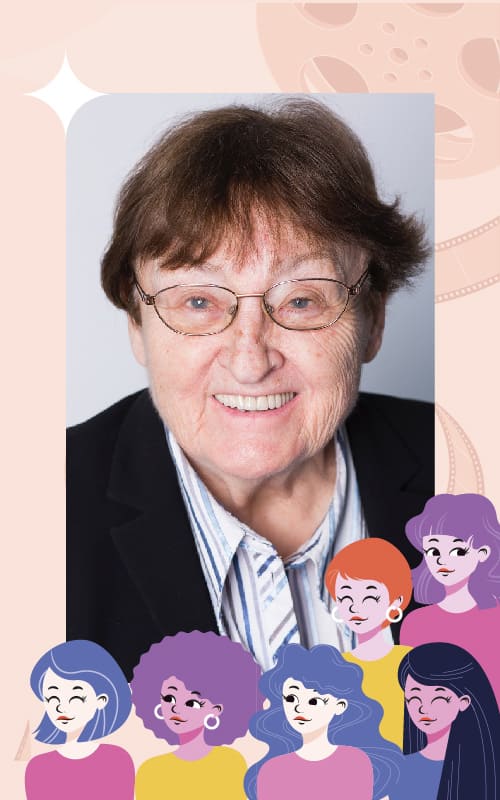
Janet enjoyed a 40 year career archiving Scottish film. She fought for the Scottish Film Council’s membership of FIAF – a major achievement for a young archive particularly as the two UK national archives were long established members (NFTVA and IWM)
She was indeed a pioneer, reclaiming missing and unrecognised Scottish cinema (Jenny Gilbertson, native film units such as Scottish Film Productions and Campbell Harper, and her own personal favourite: local topicals). Saving film from loss and damage, she ensured that Scotland’s social, cultural and industrial history was preserved and the stories of everyday people and the work of the country’s film-makers was visible.
She oversaw the construction of film preservation vaults (1999) and two major cataloguing and access projects (1999 – 2005); the first online catalogue (2003), and the merger with the National Library of Scotland (2006)
In 2006 she was awarded the Outstanding Achievement in Film by BAFTA Scotland for her work in preserving and presenting Scotland’s film heritage and in 2016 was awarded the honorary degree of Doctor of Letters (DLitt) from the University of Glasgow.
(Not bad for a young woman who started out on a job creation scheme that was only supposed to last 6 months!)

Iris Barry was a film critic and curator. In the 1920s she helped establish the original London Film Society, and was the first curator of the film department of the Museum of Modern Art, New York City in 1935. Barry recognized early on film’s merit as an art form. She sought to solidify this vision at MoMA, where she was first hired in 1932, three years later becoming the curator of the Museum’s newly formed film library—the first position of its kind in the US. Among her first instrumental moves as curator was to secure a deal with American film studios in which they donated their prints after a movie had finished its commercial run. In 1940, she organized the major retrospective D. W. Griffith, American Film Master, which established a model for film curating within the field at large. She also hired Jay Leyda, a critic who had spent three years on Sergei Eisenstein’s film crew; he gave the department an international perspective, building the Museum’s holdings of Russian and Chinese films. Over the years, until her retirement in 1951, Barry steadily built a legacy for film, securing the foundations for the department today, which safeguards more than 30,000 films and 1.5 million film stills.
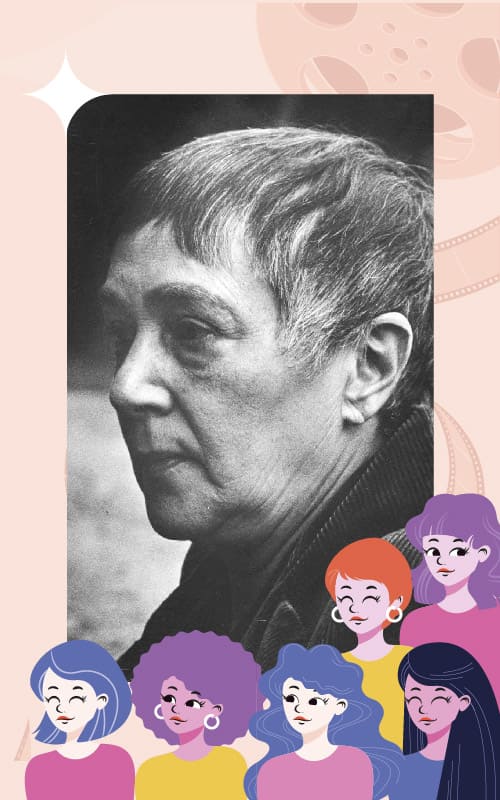
Mary Lea Bandy became the director of Film at MoMA in 1980 then served as Chief Curator of Film from 1994 until her retirement in 2006. During her tenure she expanded the museum’s collection and oversaw the construction of the Celeste Bartos Film Preservation Center in Hamlin, PA. She started at MoMA in publications in 1974.
She continued securing the works of filmmakers, much like founding Curator, Iris Barry, by seeking out the films of directors such as Martin Scorsese, Jean-Luc Godard and avant-garde filmmaker Stan Brakhage. She remained a very active member of FIAF and the New York State Council on the Arts (NYSC) and from 1999-2003 she also served as MoMA’s Deputy Director for Curatorial Affairs.
Mary Lea was instrumental in the founding of the Women’s Film Preservation Fund for New York Women in Film & Television. The French awarded her a Chevalier de L’Ordre des Arts et des Lettres in 1984 and an Officier de l’Ordre des Arts et des Lettres in 1992, and she was also made an honorary member of FIAF.

Eileen Bowser was a distinguished film archivist and historian, and a key FIAF personality from the early 1970s. During her nearly 55 years (1954–1998) as part of the Department of Film, under chief curators Richard Griffith, Donald Richie, Willard Van Dyke, Ted Perry, and Mary Lea Bandy, Bowser significantly expanded the Museum’s film collection and shaped the institution’s role in the developing film-preservation movement of the 1970s and ’80s. A respected scholar of silent film and an active member of the International Federation of Film Archives, Bowser was a pioneer in the repatriation of world cinema. She retired in 1992, but continued to teach at New York University and continued her own research and writing for a number of years. She served FIAF in many capacities over four decades. She was a FIAF Executive Committee member from 1971 to 1991 (and FIAF Vice-President from 1977-85), and Head of the FIAF Documentation Commission for many years. She took a key part in the organization of many FIAF historical symposia in the 1970s and 80s the early 1970s, and was still on it at the time of her passing. She was elected FIAF Honorary Member on 31 May 1993.
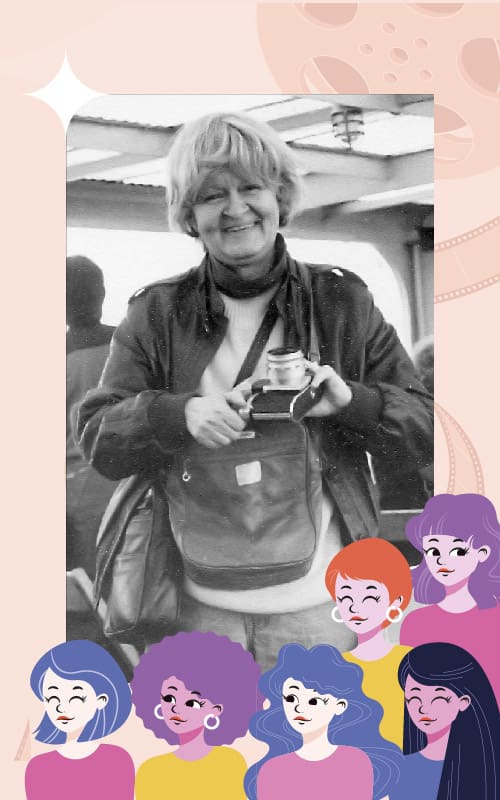
Eva Strusková (Born 24th December 1937, Prague, Czechoslovakia)
Studied journalism and aesthetics at Charles University in Prague. Published articles about film culture already during her studies. Worked as an editor in Czechoslovak Radio, the public broadcaster, from 1965 to 1969. Was forced to change her position due to political shifts in Czechoslovakia after 1968 and started working at the Czechoslovak Film Institute. She continued in her line of work as an editor, but with strict limitations in terms of topics of her publications. Luckily, Eva Strusková was given an opportunity by the new CEO of the National Film Archive, Vladimír Opěla, in her late fifties and started a new career in 1995. Founded a new archival collection of interviews using an oral history method, which was only finding its place as a new approach in the Czech republic at the time. Laid the foundations of archiving audio at the archive and recorded hundreds of interviews with Czech filmmakers representing various professions. Did research on filming in Theresienstadt Ghetto during WWII and also on Czechoslovak-Argentinian filmmakers Karel Dodal and Irena Dodalová. Published articles and did presentations on these topics, as well as on oral history and the Sound Recording Collection at the National Film Archive.
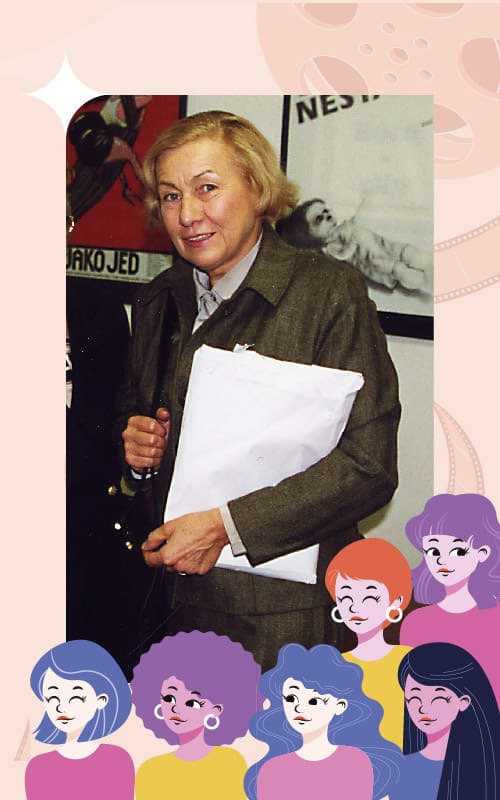
Blažena Urgošíková (1935); a graduate of the Department of Slavic Studies at Faculty of Arts of Charles University joined Národní filmový archiv, Prague (then Film Archive of the Czechoslovak Film Institute) in 1966, at a time of change within the professional structure of state-owned cinematographic industry. She represented a new generation which brought new impulse and opinions to archival work. In the department of Film Historians, where she was initially responsible for the field of Romanic and Polish cinema, she significantly contributed to the modernization of archival activities – especially to the publication of more comprehensive catalogs or the unification of filmographic and technical data on identification sheets for individual film materials. They then became the basis for the computerized processing of the NFA collections and, above all, for the general inventory of all film materials within the collection. Its results facilitated the publication of six volumes of the catalogue Czech Feature Film (1898-1993), which summarizes the filmographic, technical and bibliographic knowledge of the national cinematography from its inception to the end of the state monopoly.
Blažena Urgošíková has been also engaged in film restoration activities since the 1970s. Her first major reconstruction was the French film Les Trois Mousquetaires (1921), followed by many others, both Czech and foreign. Based on practical experience and theoretical studies, she contributed to formation of principles and procedures of the restoration process, some of which are still used by the new generation of film professionals. Since the beginning of the 1990s, she has intensively dealt with the issue of color in film, especially of tinting and toning in silent cinema. A logical part of her expertise was also lecturing and teaching activities – e.g. managing international interns, teaching film restoration at the Film and TV School of Academy of Performing Arts in Prague (FAMU) and publishing activities.

Madeline Matz (1936-2021) was an esteemed preservationist, reference specialist, grants administrator, film programmer and union projectionist, who somehow found time to restore a defunct movie theater. She began her career in the early 1970s at New York’s Museum of Modern Art where she developed exceptional skill and knowledge in the care and handling of film. In 1978, Madeline moved to Washington, DC to become Assistant Technical Officer for preservation in the Library of Congress Motion Picture, Broadcasting and Recorded Sound Division, serving briefly as Acting Technical Officer. As the first woman to hold these titles, Madeline successfully navigated the difficult terrain of working with an all-male team to establish high standards and quality control for the film lab and the curatorial section. She became a Senior Research/Reference Specialist in the Division in 1988, aiding thousands of researchers, even beyond her retirement in 2006. Madeline worked tirelessly to identify, research, preserve, restore, and exhibit film. She took a particular interest in early women filmmakers and became an active member and prolific contributor to the Women Film Pioneers Project.
For her many contributions, Madeline received the Giornate del Cinema Muto’s Jean Mitry Award (2007), the Association of Moving Image Archivists’ Dan and Kathy Leab Award (2006), and the Theatre Library Association’s Distinguished Service in Performing Arts Librarianship Award (2006).
by Arlene Balkansky
Includes content from “Madeline Matz (1936–2021)” by Kim Tomadjoglou and Jon Gartenberg, FIAF Journal of Film Preservation (issue #105, November 2021).
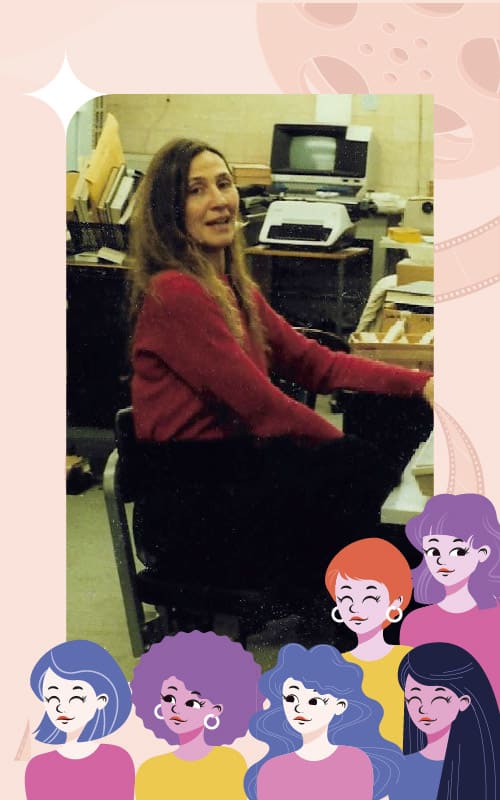
Witarina Te Miriarangi Parewahaika Harris (15 May 1906 – 10 June 2007)
Witarina Harris (Ngāti Whakaue) was an esteemed New Zealand Māori film actress, Māori language advocate, entertainer, and public servant. In the early years of The New Zealand Film Archive (now Ngā Taonga Sound & Vision) Witarina played an integral role in bringing Māori practices and protocols to an otherwise European-centric archive. She became the Archive’s first kaumatua (respected elder). Today, Ngā Taonga Sound & Vision, influenced by Witarina’s leadership, places great importance on fostering and sustaining meaningful relationships with Māori and their audiovisual taonga (treasures). The Archive has created a framework to build collaboration and trust, and to allow Māori to exercise mana and control over how their taonga are made available.
Among her many other distinguished career highlights, Witarina accompanied Māori films to international screenings, and helped provide cultural context to moving images that might otherwise be viewed as footage of an exotic people from long ago.
In 1986, Witarina was awarded the Queen’s Service Medal for community services, and in 2006 The New Zealand Film Archive presented Harris with the Taiki Ngapara lifetime achievement award.
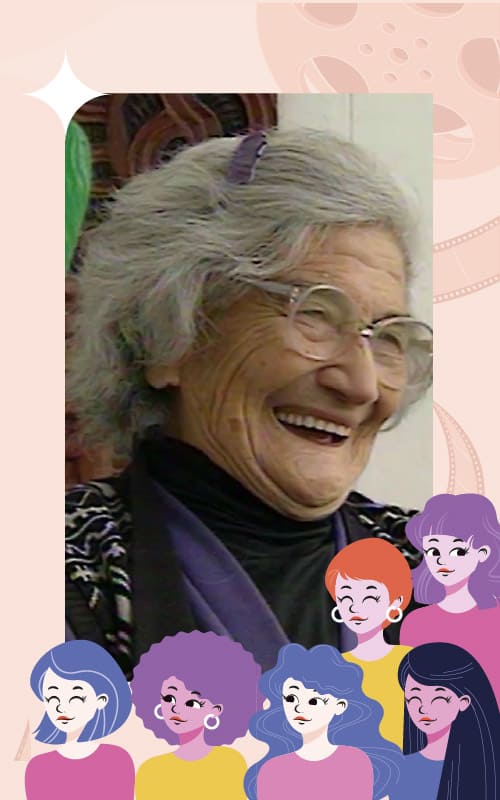
Kashiko Kawakita (1908-1993)
“Madame Kawakita,” also known as the “film ambassador,” earned the trust of the film industry both in Japan and abroad through her work and personality. She also played a major role in the establishment of a film archive in Japan.
She began her career in 1929 typing in English for a trading company called “Towa” which imported European films. She married the president, Nagamasa Kawakita, and together they introduced foreign films to Japan and promoted Japanese films to the world, as “bridges of culture and friendship.”
She recognized the importance of film preservation and became the first Japanese to attend the FIAF Congress held after WWⅡ. In 1960, she organized the Film Library Council with the head of the Motion Picture Producers Association of Japan, then, as the executive director, led the campaign to establish a film library.
The Council screened over 100 Japanese films at French-Japanese film festivals. These films, plus donated books, formed an important part of the National Film Center (now NFAJ) which was established in 1970.
The Kawakita Memorial Film Institute continues her spirit and activities.
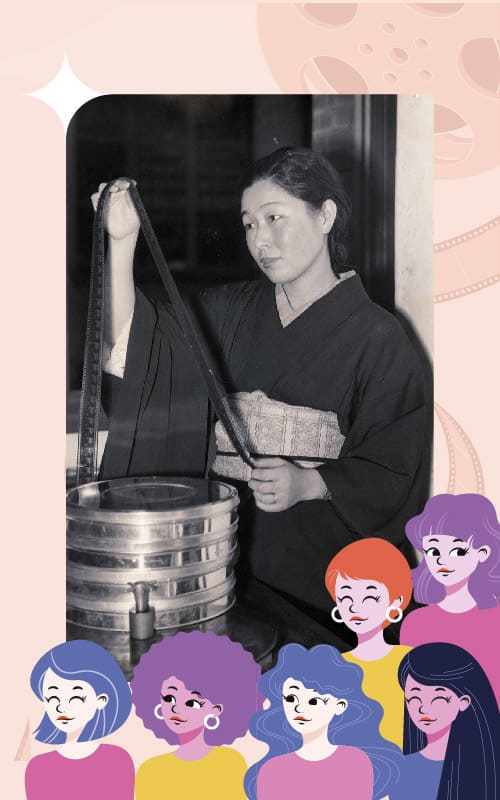
Itzel Jazmín Rangel Castelán is a three-time graduate of the Autonomous University of the State of Mexico, with a degree in Communication with a social emphasis; specialist in Gender, Violence, and Public Policies; Master in Administration with a focus on Organizational Management and Marketing. She is currently Deputy Director of Collections at the Cineteca Mexiquense, a recently created area that has assumed the responsibility of laying the foundations to form, catalog, and preserve the film memory of the State of Mexico for just over four years. Convinced of the importance of audiovisual archives and of the historical and cultural significance of these materials, she has established agreements with experienced institutions such as IMCINE, Cineteca Nacional, and the UNAM Film Archive. Thanks to this approach, the administration of the collection of the Cineteca Mexiquense is governed by the Cataloging Policies for Cinematographic Materials, approved by the FIAF. From that deputy direction, Itzel shapes and updates the list of film materials by Mexico State creators and works that contribute to the film memory of the State of Mexico. She has also provided the Mexio State public in the Toluca Valley with the possibility of taking workshops, given by specialist women and men, on film material technical management, as well as restoration, digitization, and editing of home film archives.
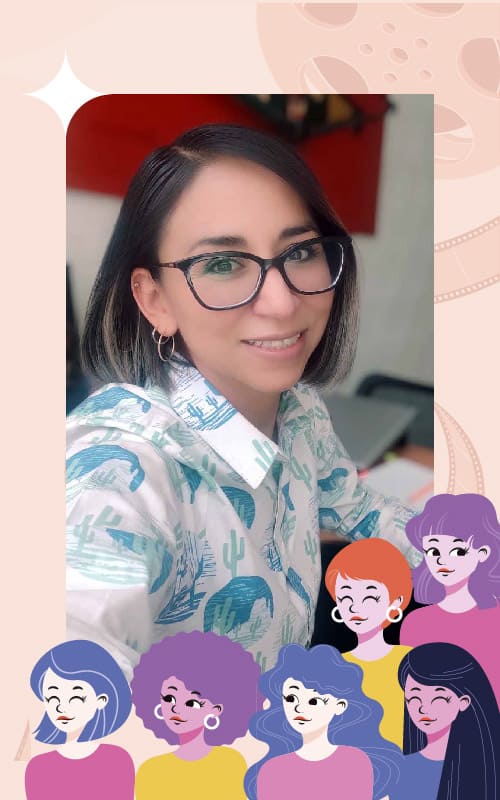
Mezli Silva is a librarian specialized in audiovisual archives and has collaborated in institutions such as the UNAM Computing and Information and Communication Technologies General Directorate, the National Music Archive, and the National Cinematheque, as well as independent projects. Her main task is the activation, cataloging, visibility, dissemination, and homologation of the archives, in addition to the reappropriation and rescue of memory.
She currently coordinates the collection of the Mexican Institute of Cinematography. Film collections such as the Short Film Production Center (CPC) have become, in many ways, a rescue mission, from mapping the location of works, digitization, and/or restoration to making them accessible.
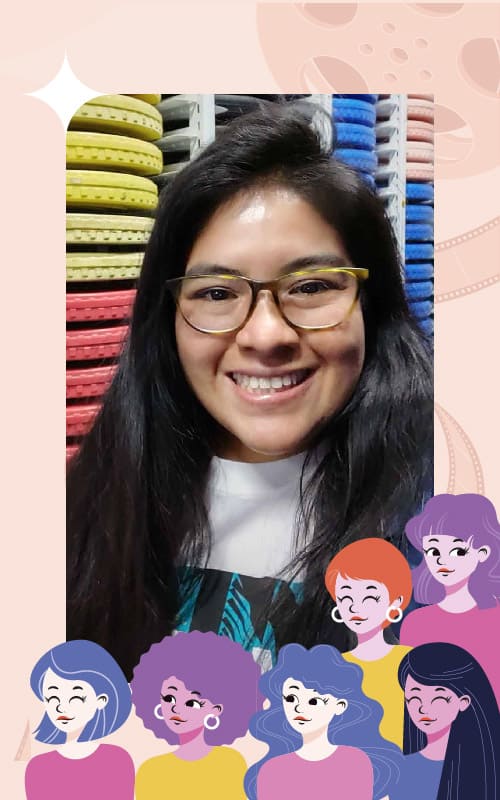
Noyule Dominique Jonard (1995) has a degree in Art History from the National Autonomous University of Mexico and a Master’s Degree in Museum Education from the University of Zaragoza, Spain. Among the most significant professional experiences she has had are research stays at the National Center for the Arts (2016), the Complutense University of Madrid, and the Reina Sofía Museum (2017). As well as carrying out professional practices at the Museo Würth La Rioja and her participation as a curator in the Los trabajos y las noches Film Festivals and the Gaztefilm Fest in Spain (2021).
She is currently in charge of directing the Dominique Jonard Archive project in Morelia, Michoacán, which is supported by IMCINE and the National School of Higher Studies (ENES-UNAM). The project seeks to rescue, preserve and disseminate different cinematographic materials (photographs, drawings, film tapes) that are the result of an animated film made by the French artist Dominique Jonard in collaboration with children from indigenous communities in Mexico, especially in the 1990s. In this project, the role of the archives is not only a primary source for tracing the historiography and cinematographic memory of the country but also a support that can provide sensory experiences to different audiences and that this, in turn, opens the possibilities of look and re-think creative processes.

Priscila Melo Martínez is a graduate of Ethnohistory from the National School of Anthropology and History. During her undergraduate studies, she participated in projects related to parish archives and later investigated and cataloged the Flavio Guillen photographic collection that is part of the “Huellas de luz” project, research on the Latin American visual heritage of the Audiovisual Laboratory for Social Research of the Mora Institute. She has collaborated in the curatorship of photographic exhibitions with the Historical Research Institute of the San Nicolás de Hidalgo Michoacana University and the Antiguo Jesuita College Cultural Center. Since 2021, she has coordinated the “Preserving memory” project, from the audiovisual archive of Canall 6 de Julio, a production company that preserves in its collection more than 5,000 units with records of the last thirty years of important events in the history of Mexico. During this project, she has outlined the criteria for the organization and documentation of the nearly 550 hours of digitized materials, in addition to developing, along with the Canal 6 de Julio team, an external consultation system that facilitates public access to the collection.
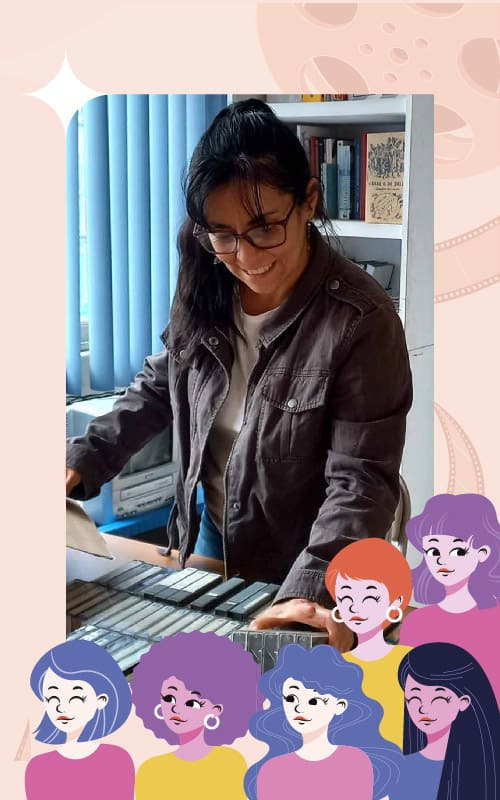
Master Tzutzumatzin Soto (1985) is an activist for alternative exhibitions and public access to audiovisual archives in Mexico. From 2012 to 2022, she collaborated with the Cineteca Nacional de México, where her work stands out for the implementation of the Digital Video Library consultation system and the foundation of “Archive Experiences”, a unique space for exhibition, research, and meeting around archive films. She also coordinated the research for the first reference guide to the iconographic heritage at the same institution (2013) and its update in 2021. In May 2022, he received the Good Practices Incentive awarded by the Photo Observatory, Friends of Audiovisual Heritage in Mexico, Memorica. Mexico Remember and the Cultural Ministry of the State of Puebla. She collaborates with various institutions and community projects in the formation and preservation of audiovisual collections. Among them, she highlights the diagnosis of Oaxacan collections, together with OaxacaCine and the creation of the Mixtli Archive. In 2023, she conceptualized and coordinated PreservaLAB, a space of the Mexican Institute of Cinematography (IMCINE) for the accompaniment of regional heritage projects. She currently accompanies cataloging and digital preservation processes at Mexican documentary film festivals.
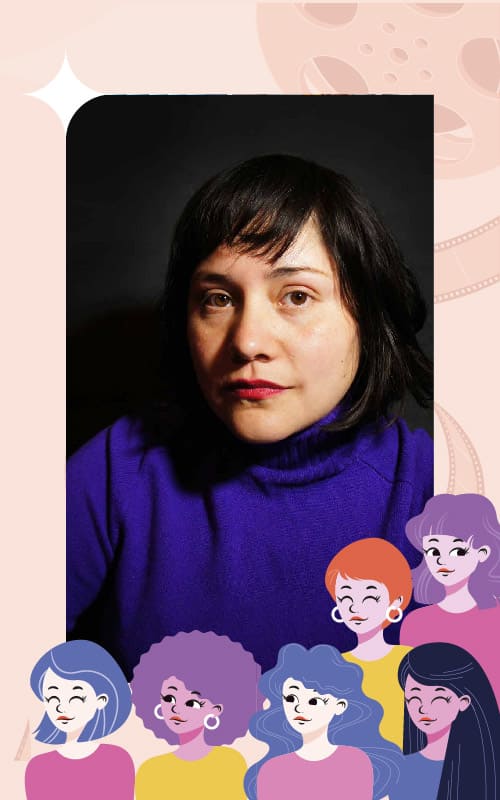
The Pardo Collection is made up of audiovisual materials collected over more than three decades in the video archive of Héctor Pardo, who was the director and producer of commercials, documentaries, and television programs. This collection was about to go to waste when the company that housed it went bankrupt. I decided to save the tapes mainly out of emotional interest. Although I had experience reusing archival materials for creative purposes, I was not sure how to organize or value this mountain of things. In 2014 I was invited to the 1st International Meeting of Audiovisual Archivists organized by OaxacaCine. There I learned, along with other collections and heritage, the principles of preservation. In addition, I met Tzutzumatzin Soto and Walter Forsberg, with whom I have continued to collaborate to this day. Thanks to this collaboration and the support of institutions such as the Smithsonian, the Fulbright Specialist Program, and the IMCINE FOCINE program, the mountain has gradually taken the form of a collection, with considerable progress in digitization. The materials have been made accessible on the free Archive.org platform and can be freely consulted.
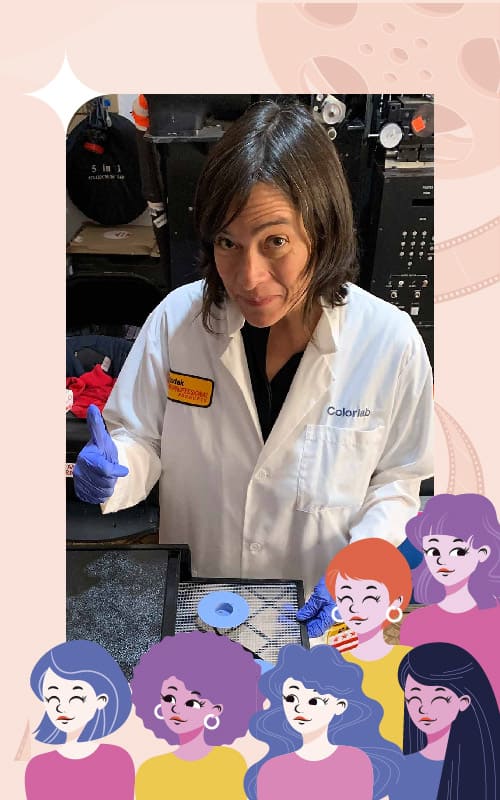
I am Adillaret Pina. I currently work at the National Electoral Institute in the Library area, with the position of Technician in processing bibliographic heritage. Some of the functions that I perform are to catalog and classify bibliographic materials, as well as the organization of audiovisual materials in original formats that our collection has. In the latter, a digitization project has been implemented, contributing the sense of keeping and preserving the Institutional Historical Memory and the political-electoral life of Mexico, carrying out the introduction of standardization of information of these analogous pieces through metadata, that allows the identification, search, and recovery of audiovisual images that are concentrated in an institutional repository that allows the organization, storage, preservation and open dissemination of the production of our institution, through https://repositoriodocumental.ine.mx/. Information is available to the public. It is worth noting some challenges in the video library area: recovery of the physical space, maintenance of video players, inventories to identify the audiovisual materials that were safeguarded, advice and research for the application of conservation and preservation measures, analysis of the information for its inclusion. in digitization projects, implementation of the consultation service, etc.

A trailblazer in the emerging field of moving image archiving, Susan Dalton (1944-2013) began her career at the Wisconsin Center for Film and Theater Research in 1969. She also co-edited the film journal, The Velvet Light Trap, from 1973 to 1978. Documentation standards were an early interest and, in 1978, Susan coordinated a National Conference on Archival Cataloging of Film and Television. From 1987 to 1998, as archivist for the National Center for Film & Video Preservation, American Film Institute, she administered the AFI Collection of over 25,000 moving images, as well as NEA/AFI Challenge grant projects. Susan initiated the international exchange of archival holdings by developing a cataloging management program that built on Ron Magliozzi’s Treasures from the Film Archives (1988) to create the foundation of what is now, under the same name, FIAF’s database. She spearheaded the massive repatriation of American nitrate silent films from New Zealand (1987), the Netherlands (1991/92) and Australia (1994). As former colleague Zoran Sinobad recalls, “Susan did absolutely everything, from initial contacts with foreign archives to unloading the trucks!” Among the significant works Susan rescued is Oscar Micheaux’s “Within Our Gates,” acquired from Filmoteca Espanola and preserved by the Library of Congress. Chris Horak, former director of the UCLA Film & Television Archive, recognized, “A big chunk of American film history, especially from the rare 1910s-1920s, owes its survival in American archives thanks to Susan.” Susan received the Association of Moving Image Archivists’ Silver Light Award (2012) and Le Giornate del Cinema Muto’s Jean Mitry Award (2014).
by Kim Tomadjoglou
Includes content from “Susan Dalton (1944-2013),” UCLA Library Film & Television Archive blog, January 3, 2014, by Jan-Christopher Horak

Emma Roldán (1893 – 1978), as an actress, masterfully gave life to women from all social strata. Along with acting, she made wardrobe for the movies. Among many others, she made the dresses worn by Andrea Palma in La mujer del puerto (Arcady Boytler, 1933).
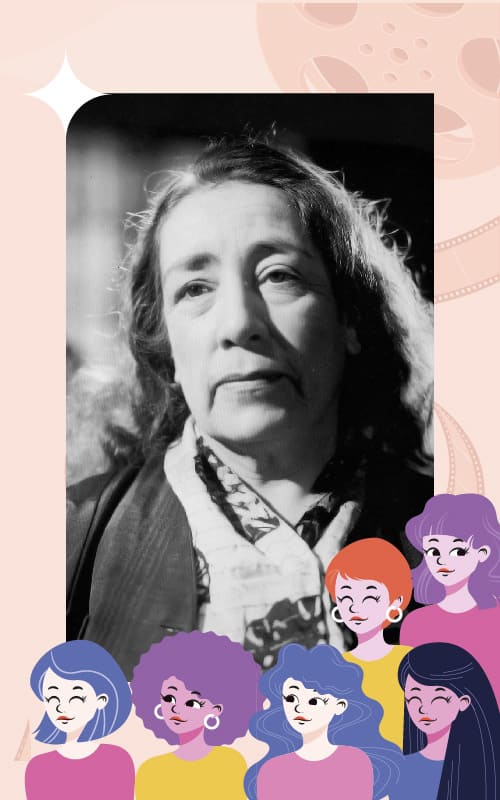
Blanca de Castejón (1906–1969) distinguished herself by her good attire, being herself the author of the design, and manufacture of elegant creations. In 1946, her name appeared for the first time as a costume designer in La niña de mis ojos (Raphael J. Sevilla), an activity that she developed for a brief period, to fully dedicate herself to her acting career in film and theater.
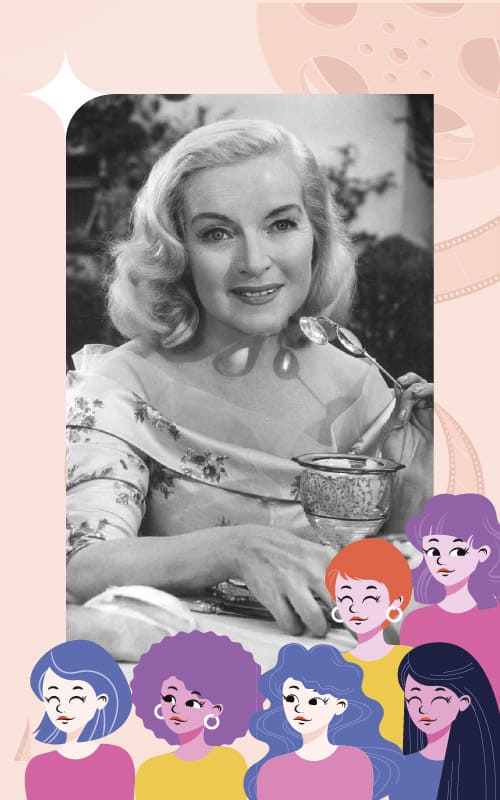
When she came of age, Rita Macedo (1925–1993) entered the world of fashion as the “Mannequin of the Year 1942” in a show by Royer, a notable Hollywood costume designer. She made the iconic pink dress of “Paloma” in Los caifanes (Juan Ibáñez, 1967). Rita Macedo was recognized for her performances in Nazarín (Luis Buñuel, 1959), Tú, yo, nosotros (Jorge Fons, Gonzalo Martínez and Juan Manuel Torres) -which earned her the Ariel- El castillo de la pureza (Arturo Ripstein, 1972) and Los indolentes (José Estrada, 1977).

Guadalupe Ferrer Andrade (1949) has been Director of the Cineteca Nacional de México, Director of TV UNAM, Director of Cinematographic Cultural Promotion of the Mexican Institute of Cinematography (IMCINE), and General Director of the UNAM Cinematographic Activities and Film Archive. She has been a teacher for more than 30 years at UNAM. In 1994 she was decorated as a Knight of the Order of Arts and Letters of the French Government. She is currently an active member and part of the Oversight and Surveillance Commission of the Mexican Academy of Cinematographic Arts and Sciences.

Michelle Aubert (1942-2016) (known as Michelle Snapes from 1965 to the late 1980s) has to her credit a long and distinguished career supporting the conservation, restoration and promotion of films and non-film archives, having worked for two historical Members of FIAF: first, the British Film Institute, where she was an indexer in the Information Department (1969-1974), then Head of the Stills Department (1975-1985), and finally Deputy Curator at the National Film Archive (1986-1989); then, the Archives françaises du film (CNC) in Bois d’Arcy, where she worked as Curator until her retirement in 2007. The passion and determination she showed in these two key film heritage institutions has also guided the impressive work she accomplished within FIAF over three decades. In the early 70s, she was one of the initiators of the Periodicals Indexing Project (P.I.P.). She was later a very active Head of the Documentation Commission from 1988 to 1991, before joining the Executive Committee that year. She was President of FIAF from 1995-1999. She received a FIAF Honorary Membership in June 2016, a few months before she passed away.
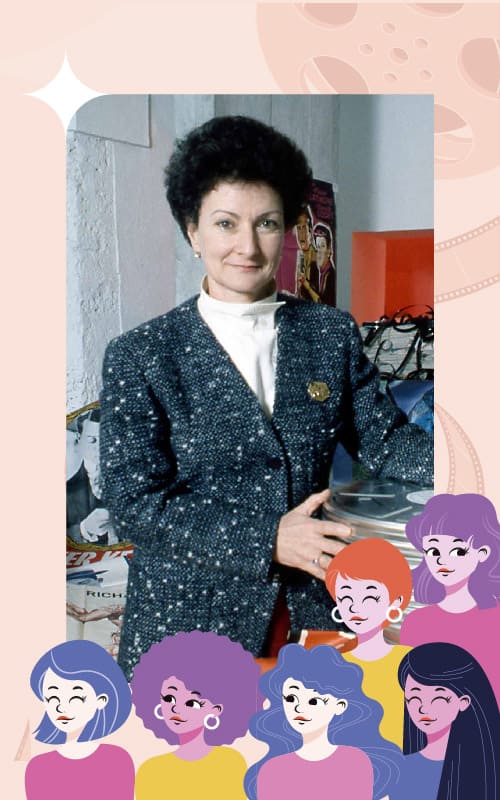
Maria Adriana Prolo (1908-1991) was a film collector and historian, and the founder of the Museo Nazionale del Cinema in Turin, which she led as Director until 1985 (and served as its Honorary Director thereafter). She started collecting documents, film stills and posters and film equipment of early cinema in 1940, and a year later the idea of a cinema museum was born. In 1949, she met Henri Langlois, and these two kindred spirits became good friends and supported each other for years to come (their correspondence was published in 1992 under the title Le Dragon et l’alouette: correspondance 1948-1979).
In 1953, the Associazione Museo del Cinema was formally created and the museum was admitted as a provisional member of FIAF (it would be confirmed as a full Member the following year). The Museum, housed in the Palazzo Chiablese, finally opened to the public in 1958. Although Prolo was not part of the first core group of FIAF pioneers (she only sat briefly on the FIAF Executive Committee in the mid-1950s), she remained a highly-respected and discreetly influential figure of the FIAF community. Despite her close friendship with Langlois, she did not follow him when he left FIAF in 1960, and she hosted the 1975 FIAF Congress in Turin.
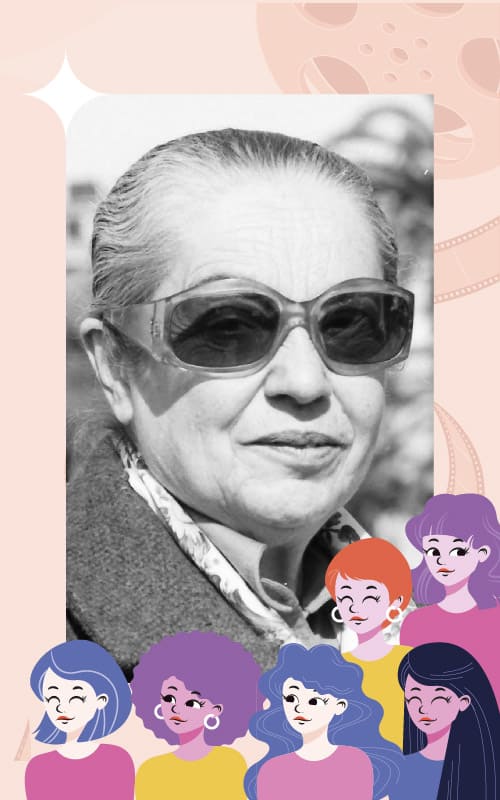
Maria Rita Galvão (1939-2017) was involved in the Cinemateca Brasileira from the mid-1970s. She soon became its Director, and then the President of the reconstituted Cinemateca in 1987. She was introduced to the FIAF community at the 1979 Congress in Lausanne. She was a member of the FIAF Executive Committee (1987-91) and FIAF Vice-President (1991-93). She was an influential figure among the archives of the Coordinadora Latinoamericana de Imágenes en Movimiento (CLAIM), a network which she helped create, and carried out important research on the history of Brazilian cinema and on the situation of film heritage in Latin America.
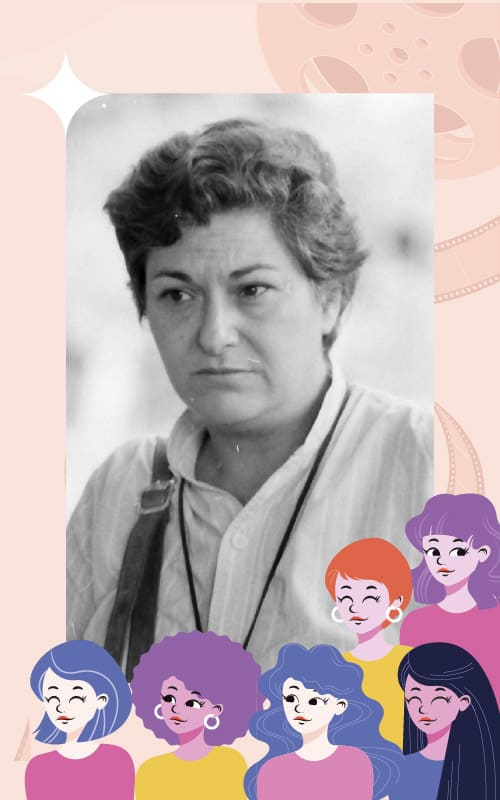
Eva Orbanz (1942- ) worked for the Deutsche Kinemathek in Berlin for 34 years, and was an active figure of the FIAF community for nearly as long. After working as secretary in an architect’s office (1963-66), she went on a study trip to the US in 1966, and worked for the Deutsche Film und Fernsehakademie Berlin (German Film and Television Academy) from 1967 to 72. In 1973, she did internships at the Cinémathèque royale de Belgique and at the BFI before joining the Deutsche Kinemathek in October 1973 as Administrator and Coordinator. In 1985 she was appointed Head of the Film Department, and remained in that post until her retirement in 2007.
She started representing the Deutsche Kinemathek at FIAF Congresses in 1974. She joined the FIAF Executive Committee in 1981, served as Secretary-General from 1989 to 1995, and as President from 2003 to 2009. She also represented FIAF at the Roundtable of Audiovisual Records, and later the CCAAA, from 1991 to 2009. She was elected FIAF Honorary Member in May 2009. She has since remained an active film scholar.
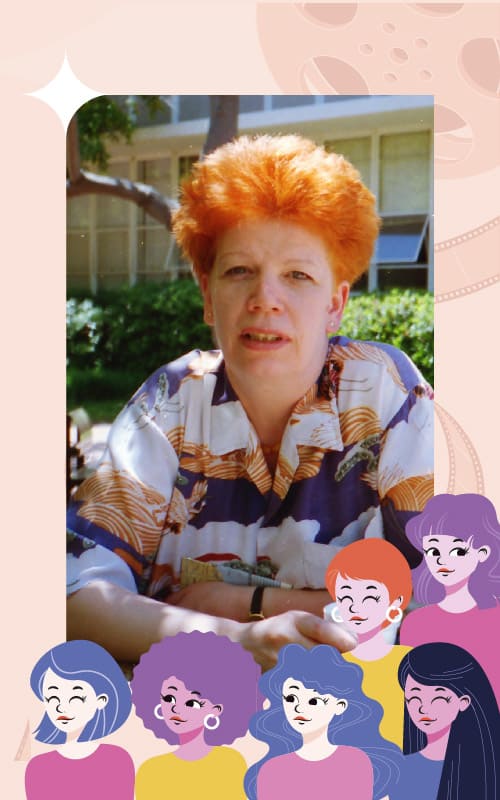
Anna-Lena Wibom (1933- ) joined the Svenska Filminstitutet (Swedish Film Institute) soon after its creation in 1963, and attended her first FIAF Congress in 1965 in Oslo. In her first decade at the SFI, she programmed the Institute’s cinematheque (Cinemateket), which moved to its permanant home at Filmhuset (“Film House”) in 1971. In the late 1970s she became the SFI’s Director (and from 1985 to 1993, its Artistic Director). Also for the SFI, she produced Andrei Tarkovski’s Offret (The Sacrifice, 1986). She sat on the FIAF Executive Committee for twelve years (1981-93), serving as President (1985-89), Vice-President (1989-91), and Treasurer (1991-93).

Lia van Leer, née Greenberg (1924-2015), was a pioneer in the fields of repertory film programming and film archiving in Israel, and an important figure of the international film archive movement. Born in Romania in 1924, she was sent by her parents to Palestine to visit relatives and never returned. In 1955, she and her husband Wim van Leer founded Israel’s first film club in 1955 in Haifa. A few years later they founded the Israel Film Archive (still in Haifa), with Lia van Leer at its head. It was during her first FIAF Congress in Budapest in 1961 that the Israel Film Archive was admitted as a provisional member of FIAF. Two years later it obtained the status of full member. A cinematheque, which opened in Jerusalem in the 1970s, was added to the institution. In 1981, the Film Archive and the Cinematheque were finally reunited under one roof in Jerusalem. As the director of the Israel Film Archive / Jerusalem Cinematheque, Lia van Leer continued to attend most FIAF Congresses until the early 2000s. Although she never occupied an official post in FIAF, she was a quietly influential member of the FIAF community. In 1996, she hosted the first FIAF Congress to be held in Jerusalem.
In 2004, she was awarded the Israel Prize – the most prestigious award given annually by the State of Israel – in 2004 for her life’s work. She remained director of the Israel Film Archive / Jerusalem Cinematheque until 2008, but kept a close connection with the institution until her death in 2015.
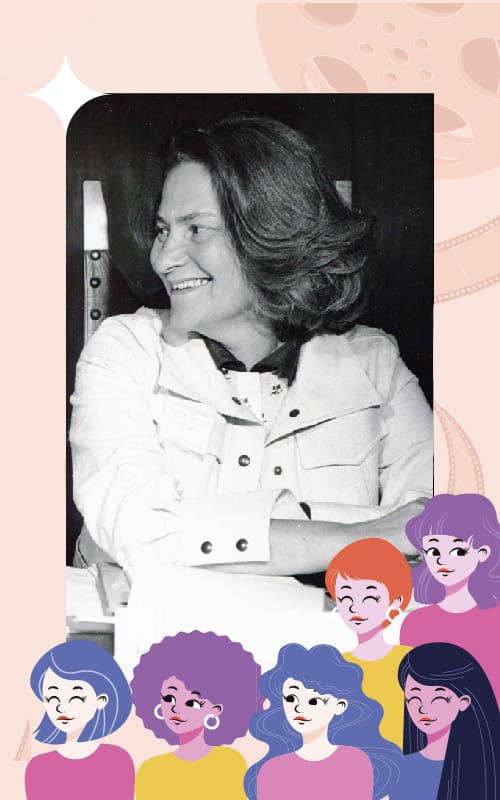
Margaret Herrick (September 27, 1902 – June 21, 1976)
Margaret Herrick remains among the lesser known of cinema’s earliest champions, despite her recognizing the need for a film study collection in Los Angeles and single-handedly laying the foundation for the Academy of Motion Picture Arts and Sciences’ research library, one of the world’s most important collections documenting the history, art, sciences and industry of motion pictures.
In 1936, Herrick became the Academy’s first official librarian. She set to work establishing a more formal library, seeking out and buying books and creating the library’s clipping files, which are still maintained today.
As Executive Director of the Academy, Mrs. Herrick facilitated the 1947 donation of the William Selig papers, the library’s first major archival acquisition. That gift, along with the others that followed, established the library as a primary research center for the study of motion pictures. In addition, Mrs. Herrick negotiated the Academy’s first television contract in 1953, which gave the organization its first taste of financial independence. No longer reliant upon the studios to cover the expense of the Awards, the Academy could instead focus on education, programming and related activities.
Margaret Herrick’s legacy within the Academy looms large, but it is equally impressive within the context of Hollywood history that she held the highest office of a major film industry organization for almost three decades. In photographs, she’s usually the only woman in the room, dressed elegantly and smiling broadly as she is flanked by two or more men.
She held her position as Executive Director of the Academy until her retirement in 1971.
When the Academy relocated its library to the former Beverly Hills Waterworks Building in 1991, the library was named in her honor.
